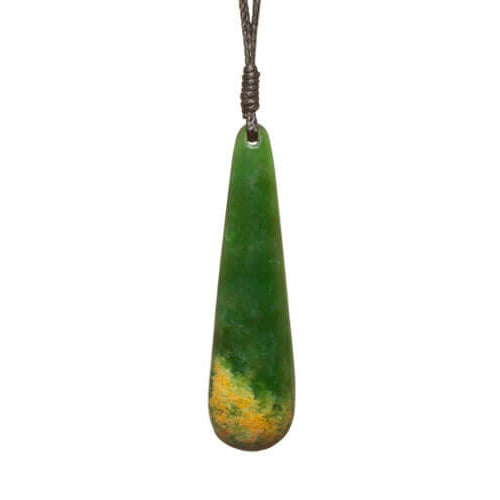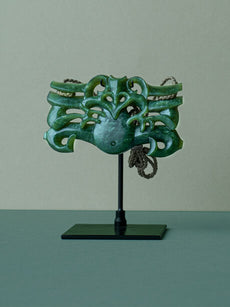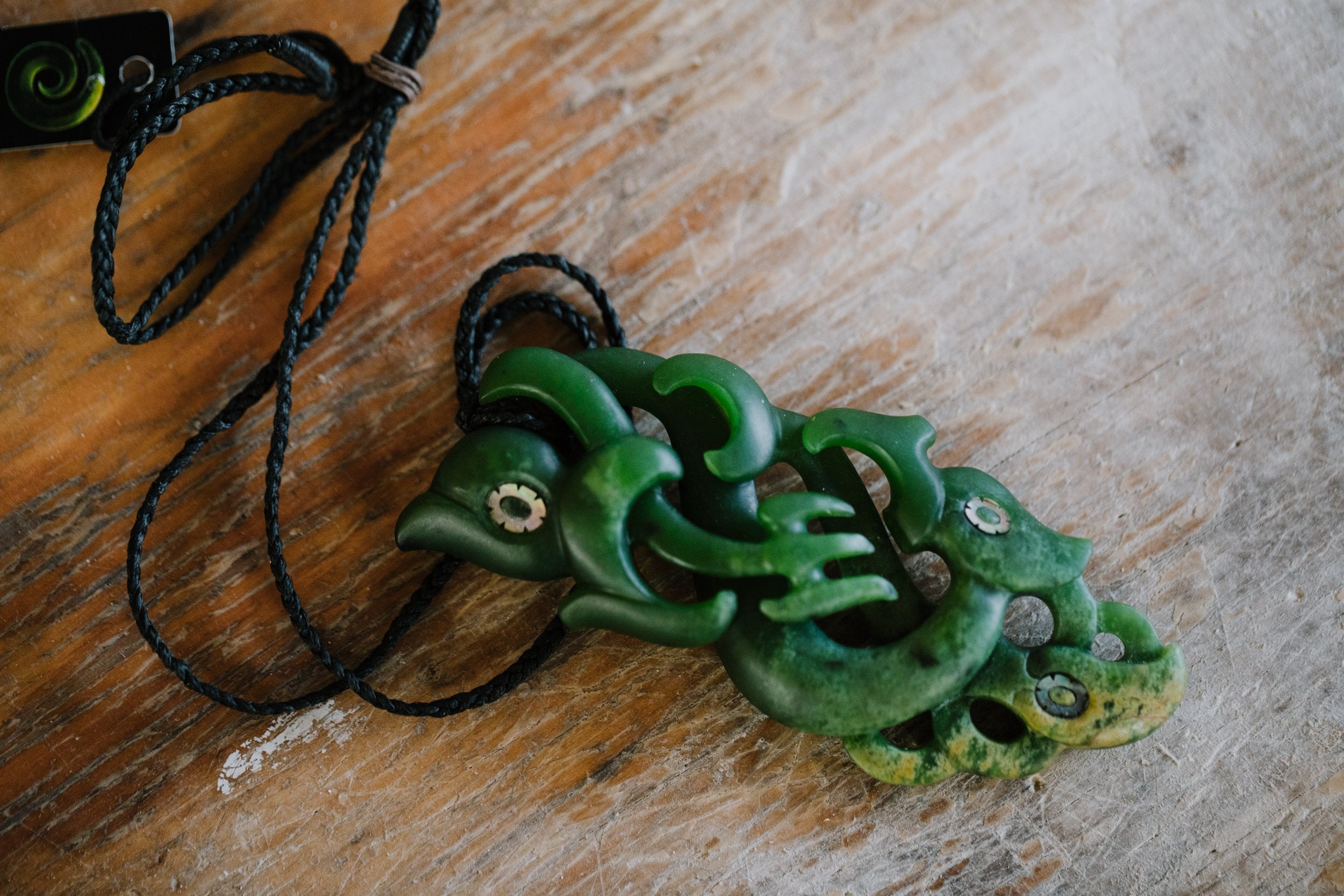Your cart is empty
Keep Shopping
The History
Before they became ornamental they were an everyday tool used in cutting and digging. Toki were also lashed to expertly carved wooden shafts and wielded by powerful Māori chiefs during religious ceremonies. These toki were known as toki poutangata.
Our national museum finds that toki poutangata were used on ceremonial occasions, such as the felling of a great tree for a significant waka (canoe) or for the ridgepole of a whare nui or meeting house.
The first chips cut from the tree were taken by the tohunga to a special place where a karakia of thanks was recited to the god of the forest, Tanemahuta, in acknowledgment of the sacrifice of his offspring.
NEW ZEALAND DESIGN
Traditionally the toki was a tool that could also be found expertly lashed into carved wooden shafts and wielded by powerful Māori chiefs for ceremonies.

Mana and life force
All Māori design has an element of magic that can increase the life spirit of the object or person it adorns. So when the toki was lashed to an expertly carved shaft, the life spirit, the mana of the toki, increased.
This power is why the chief, the most powerful tribesmen, was the only one allowed to wield it. Today when worn around the neck, the toki is said to represent strength because of this distant association with the tribal chief and increased life force of the toki poutangata.

A symbol of strength
Toki are now worn around the neck as a symbol of strength. This association links back to when toki blades were used as a tool, and had to be strong so not to break. Also, only powerful chiefs with great strength and mana could wield the toki poutangata. Today, toki pounamu are often gifted as as a celebration of courage, determination, success, and bravery, as well as to link the past to the present with reverence and respect.

Discover more
Toki (Adze) Necklaces

The Tooth
Like the toki blade, there are similar designs that also represent strength. The shark tooth is one such example. This is because the mako shark is such a resilient, strong creature that has survived on earth for thousands of years.
The thinking is that by wearing a 'tooth' of the shark, it will impart some of this resilience onto the wearer. Before the European Maori society, the shark tooth necklace was carved as an exact replica of the mako sharks tooth and worn in the ear.

Drop Pendants
Long greenstone drop pendants are also similar to the toki blade. According to a Maori myth, they represent the tears of crying albatross birds.
In the Ngāti Porou story of how the kumara (sweet potato) came to New Zealand, the ancestor Pourangahua left his wife on the East Coast of New Zealand when he returned to Hawaiki to obtain the tubers. There, his tohunga (priest) Ruakapanga not only gave him baskets containing the kumara tubers but also two sacred birds, to help him return to New Zealand. He instructed Pourangahua that he must give prayers of thanks on his safe arrival back in New Zealand, as well as prayers for the safe return of the sacred birds back to Hawaiki and for a bountiful kumara harvest. However, in his joy at being reunited with his beautiful wife, Pouranahua forgot his instructions. Later, he found the albatross birds weeping, their tears falling onto their breasts. One had been crying so long that its tears were dripping.
These long slender drops are carved in greenstone and known as 'roimata'.



























Follow Us
Stay in the know on new releases, special offers, and more.